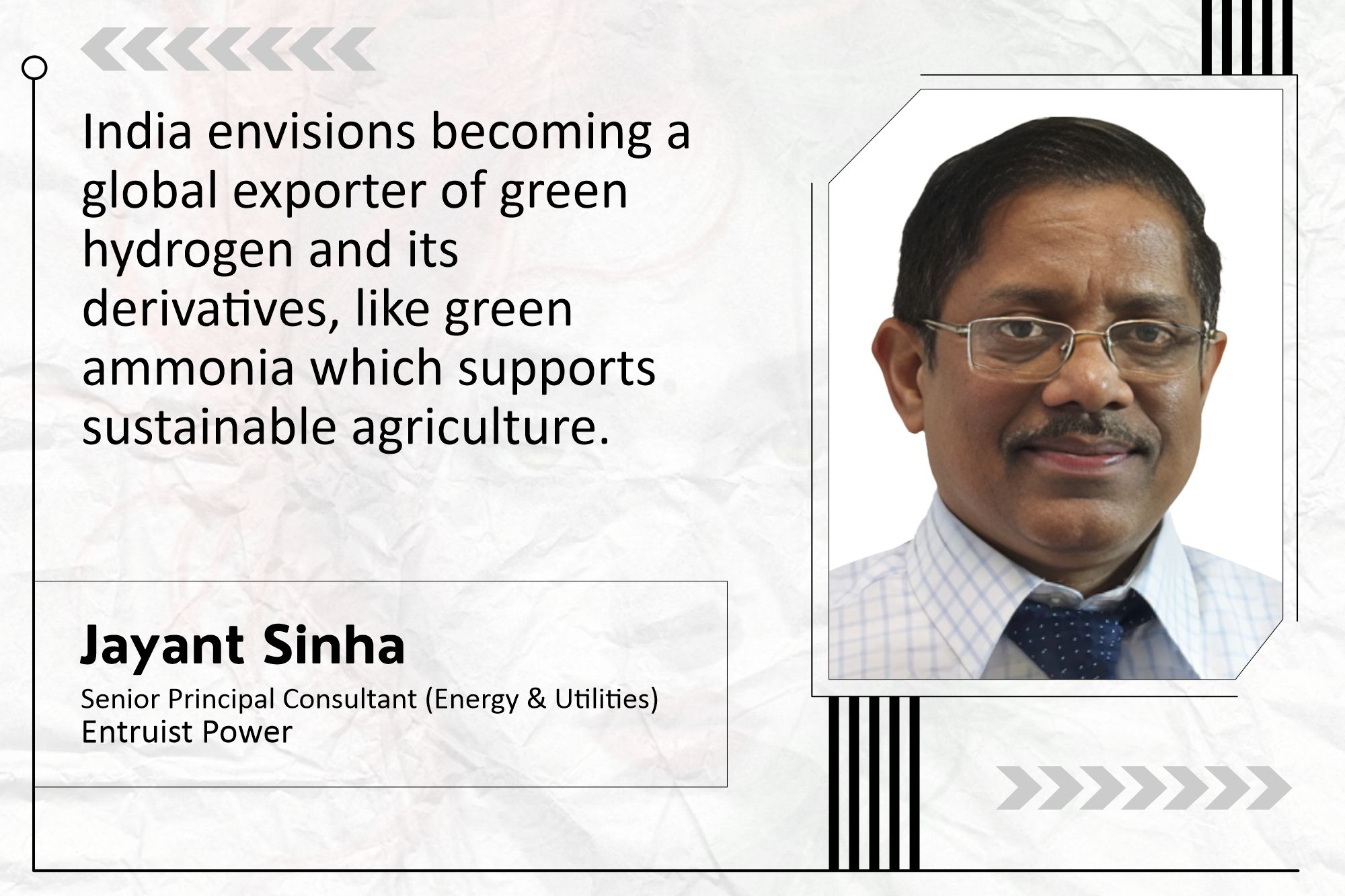Technological innovations and circular economy accelerating energy transition
By EPR Magazine Editorial March 25, 2025 4:18 pm IST
By EPR Magazine Editorial March 25, 2025 4:18 pm IST

Floating solar installations like the one implemented by NTPC optimise water bodies for energy generation.
The climate action plan under the Panchamrit strategy in India sets ambitious targets to achieve 50 per cent of its electricity demand from renewables by 2030, reduce carbon emissions by 45 per cent from 2005 levels and cut 1 billion tons of total emissions. The country aims to achieve 500 GW of non-fossil fuel capacity by 2030 and reach net-zero emissions by 2070. The government has introduced three key missions to meet these goals: the National Hydrogen Mission, the National Policy on Biofuels and the Faster Adoption and Manufacturing of Electric Vehicles (FAME) scheme. These initiatives drive India’s energy transition, focusing on green hydrogen, bioenergy and sustainable electric mobility.
The National Hydrogen Mission is central to India’s efforts to establish a robust green hydrogen ecosystem. With a target of producing 5 million metric tons of green hydrogen annually by 2030, the plan involves deploying 135 GW of renewable energy capacity to power electrolysers. Infrastructure development includes green hydrogen hubs at ports like Paradeep in Odisha and terminals in Kerala. India also envisions becoming a global exporter of green hydrogen and its derivatives, like green ammonia, which supports sustainable agriculture.
The National Policy on Biofuels leverages the country’s agricultural strength to produce low-carbon energy. Agricultural waste and forest residues are utilised for bioenergy generation, reducing pollution from stubble burning and contributing to cleaner air. The government aims to achieve a 20 percent ethanol blending target in petrol by 2025, cutting vehicular emissions.
The FAME scheme promotes the adoption of electric vehicles (EVs) to reduce transportation-related emissions, which account for 37 percent of the country’s CO2 emissions. However, challenges remain in securing critical materials like lithium, cobalt and nickel for EV batteries. India is exploring sustainable mining practices and circular economy principles to address this. Building a widespread EV charging infrastructure and ensuring interoperability is essential to support the growing EV market. Concepts like vehicle-to-grid integration are also being explored, enabling stored energy in EV batteries to be supplied back to the grid during peak demand.
Technological innovations are accelerating the country’s renewable energy transition. Floating solar installations like the one implemented by NTPC, optimise water bodies for energy generation. Agri-voltaics power agricultural pumps using solar cells, while thin-film solar panels offer lightweight and flexible solutions for remote locations. Advanced materials like perovskite enhance solar panel efficiency, but managing end-of-life solar waste remains challenging. Circular economy principles are being applied to recycle and repurpose solar panels and wind turbine blades.
Bioenergy innovations also significantly reduce carbon emissions. Agricultural waste is converted into bioethanol and blended with petrol, reducing fossil fuel reliance. Advanced biofuels and waste-to-energy technologies offer sustainable solutions for energy generation, minimising agricultural pollution.Integrating renewable energy into the grid presents challenges in maintaining stability. Advanced Energy Management Systems (EMS) and Distributed Energy Resource Management Systems (DERMS) enable real-time monitoring and management of grid parameters. Artificial Intelligence (AI) and big data analytics predict energy demand and weather patterns, ensuring efficient grid management. Battery Energy Storage Systems (BESS) further support grid stability by storing surplus renewable energy during peak demand.
Emerging technologies like blockchain are enhancing transparency and security in energy trading. With increased participation from independent power producers and consumers, blockchain ensures secure energy transactions and real-time settlement. Additionally, digital twins and drones equipped with thermal and visual cameras facilitate predictive maintenance, reducing downtime and enhancing operational efficiency.
Its comprehensive climate action plan shows the nation’s commitment to renewable energy and sustainability. By focusing on green hydrogen, biofuels and electric mobility, supported by technological innovations, the country is well-positioned to achieve its ambitious climate goals. Strengthening policy frameworks, fostering private sector participation and investing in sustainable infrastructure will further accelerate the energy transition in India, contributing to a greener and mordigital twin
e sustainable future.
We use cookies to personalize your experience. By continuing to visit this website you agree to our Terms & Conditions, Privacy Policy and Cookie Policy.